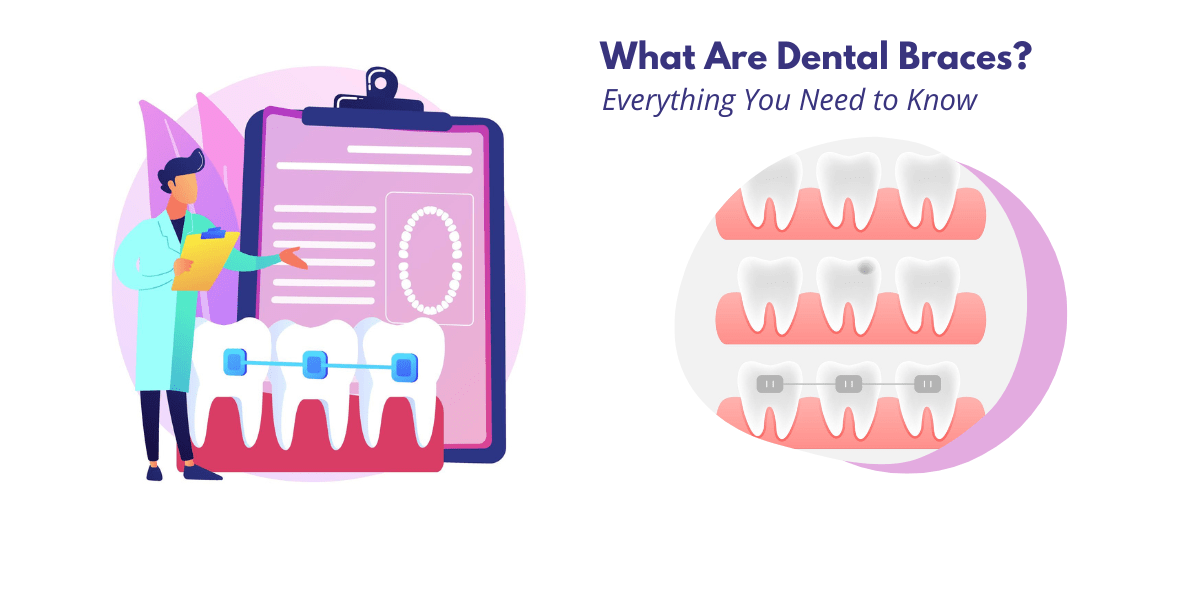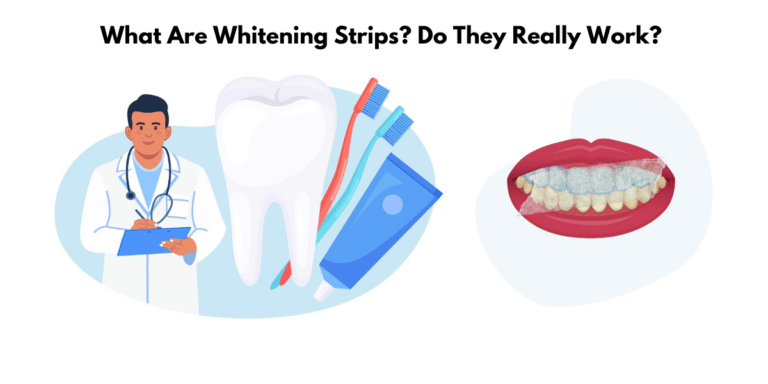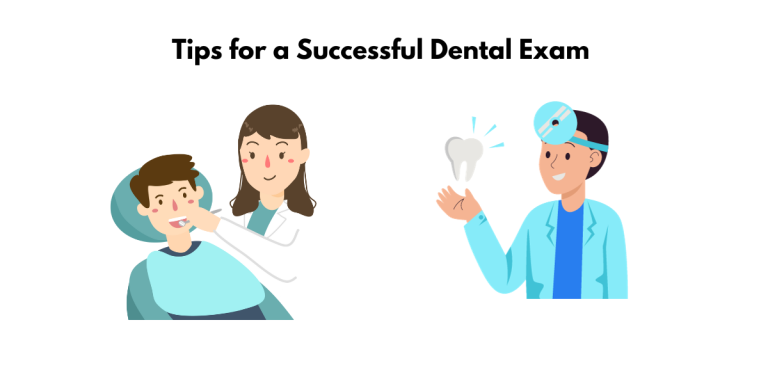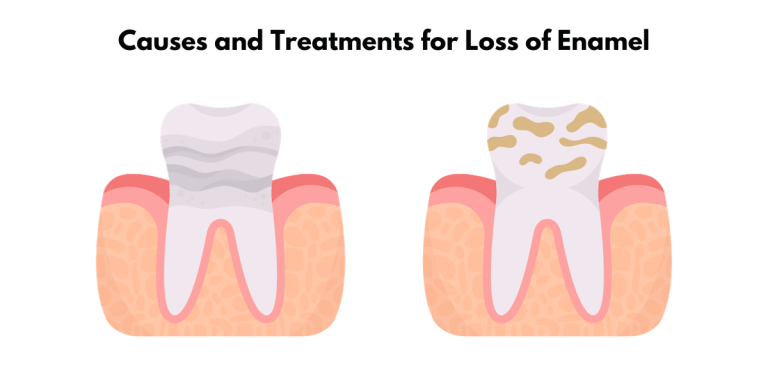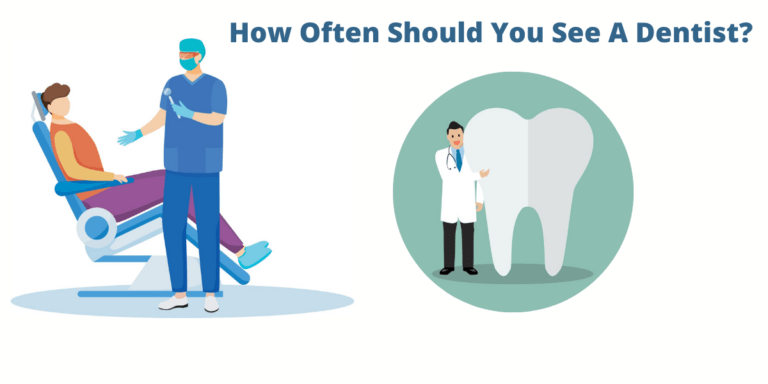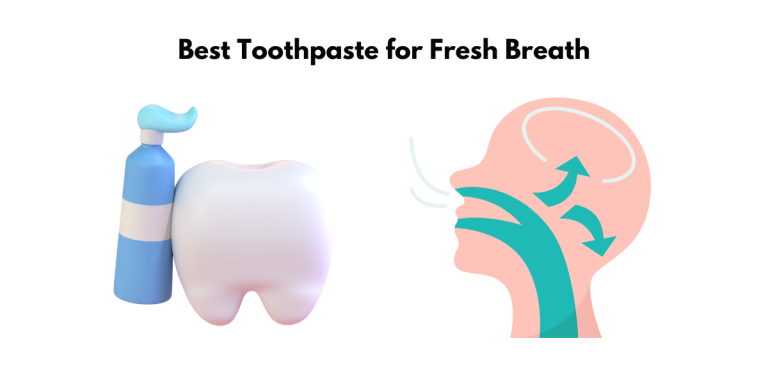All You Need to Know About Dental Braces: Types, Cost, How They Work, and More
All You Need to Know About Dental Braces
Dental braces are not just for teenagers. Many adults choose to get braces to improve their smile. Unfortunately, dentists don’t always tell you everything about braces, including the fact that they come in many different types, that adult braces can be worth it, and that you have the right to cancel your dental braces within 30 days if you decide they are not for you.
Dental braces are a common orthodontic treatment that can help straighten teeth. Various dental braces are available, and your health insurance plan may cover your chosen type. Understanding the cost, how they work, and other factors are important before getting dental braces.
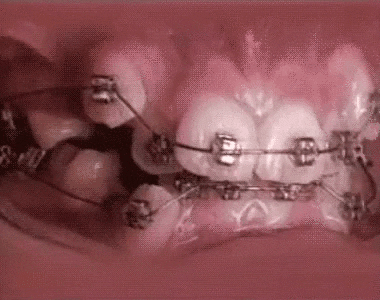
What are dental braces?
Dental braces are devices that correct crowded or crooked teeth or a misaligned jaw. They work by applying constant pressure to your teeth, slowly moving them into the correct position. Braces come in various types and materials but are often made of metal or ceramic. They consist of wires and bonding material that attach them to your teeth. Braces are most commonly used during adolescence, but more and more adults are getting corrective dental braces later in life.
Dental braces are appliances that are used to correct alignment issues with teeth. An orthodontist is a doctor who specializes in this type of device and dental medicine. The Mayo Clinic points out that braces are generally very effective for people who use them. Still, their effectiveness depends on the person and their ability to follow their orthodontist’s instructions carefully.
How much do braces cost?
The cost of braces can vary greatly depending on the orthodontic treatment needed, how long you need to wear them, and the type of braces used. In general, most patients in the U.S. pay between $3,000 and $7,000 for braces.
In many cases, dental insurance will cover at least part of the traditonal braces cost. However, you may be required to pay a portion out-of-pocket. Remember that dental insurance typically does not cover adults’ costs since they are considered cosmetic treatments. However, in some cases, your insurance company may agree to cover a portion of the costs of affordable braces if your teeth need to be straightened for health purposes, such as preventing decay in a certain tooth in the future.
How long do you have to wear braces?
The severity of the person’s bite and how crooked their teeth are, to begin with, are the biggest factors that affect how long a person will have to wear braces. On average, people wear braces for about two years, but it can be anywhere from 18 months to three years, depending on the individual case.
How often do you need to see the orthodontist?
It is important to see the orthodontist every four to eight weeks for a check-up. The time between visits will depend on how well you take care of your traditional braces and how quickly your teeth move.
Orthodontic treatment is a team effort between you and your orthodontist. To achieve the best possible results, you must keep all of your scheduled appointments and follow all of the instructions given to you by your orthodontist.
What are the different types of braces?
There are four main types of braces: metal, ceramic, self-ligating, lingual, and clear aligners.
Metal braces
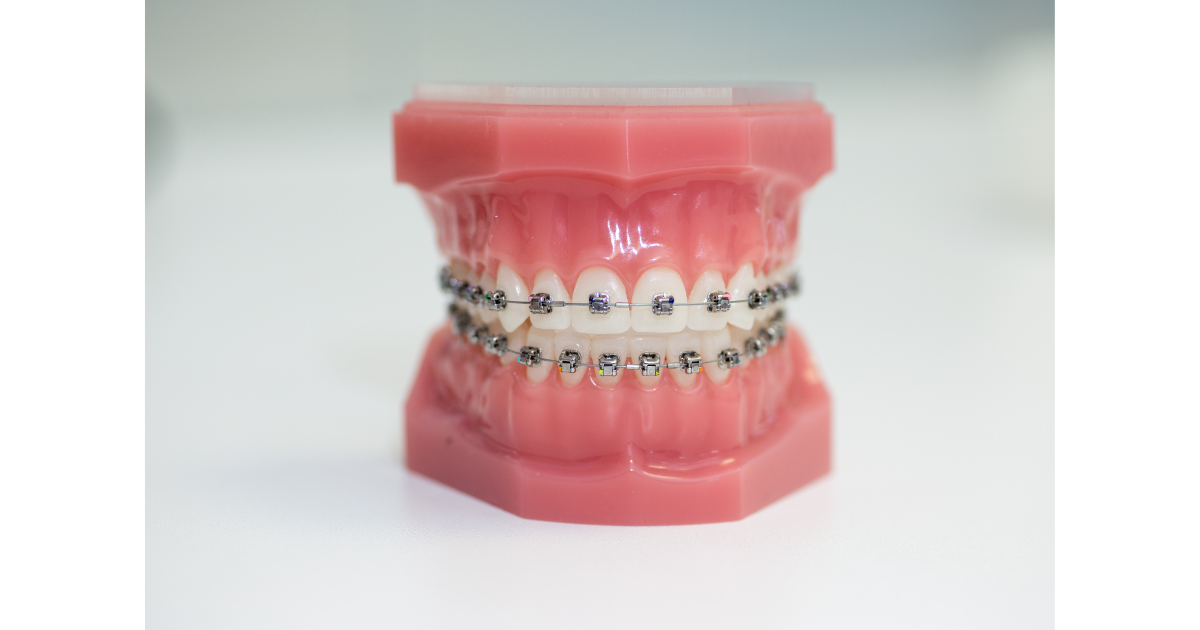
Metal braces are the most common type and use high-grade stainless steel brackets that can be customized with clear or colored bands. They are the most economical choice and still the most popular type of braces.
Patients who choose traditional braces will have metal brackets and bands with high-grade stainless steel wires attached to their teeth. These wires will be wrapped around the molars, and the brackets will be attached to the front of the teeth. In addition, patients can expect to experience different types of archwires, elastic rubber bands, metal ties, and other clasps during their treatment.
Ceramic braces
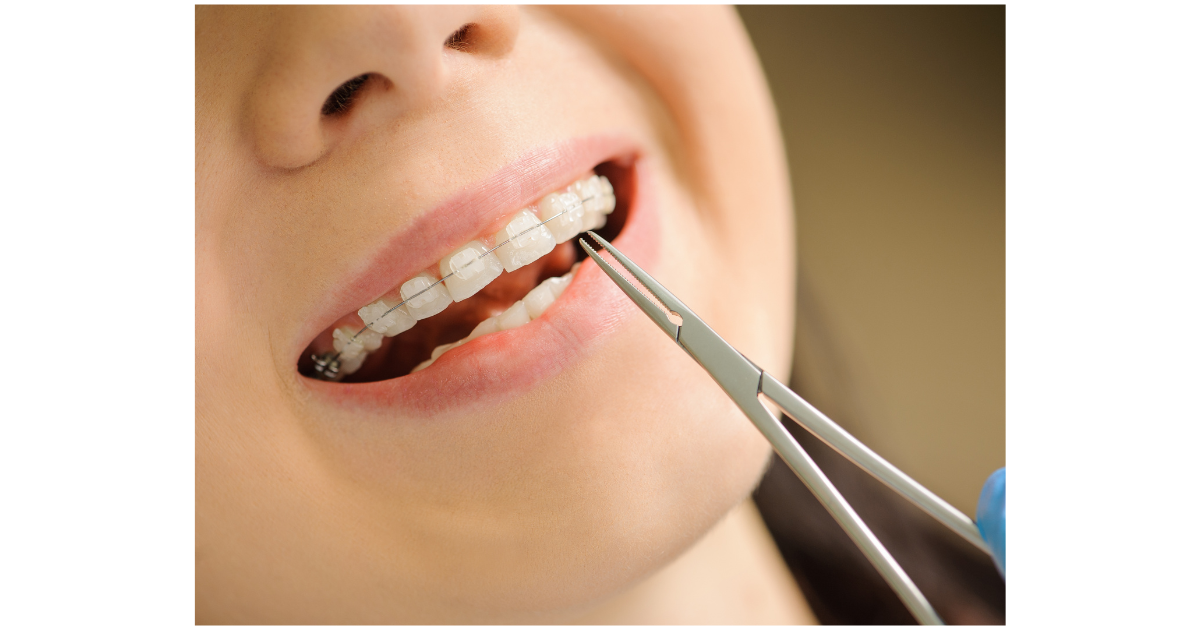
Ceramic braces are tooth-colored brackets that use the same elements as metal braces, but they are less noticeable because they blend in with the teeth. They are very similar to traditional metal braces in size and shape, but they are made of a ceramic material that is less noticeable.
Orthodontists use this type of braces to fix teeth that are crooked, gapped, or have spaces between them. They are more expensive than traditional metal braces, and they may become stained if not properly cared for. Orthodontists typically fix the braces with invisible screws instead of brackets or wires.
Self-ligating braces
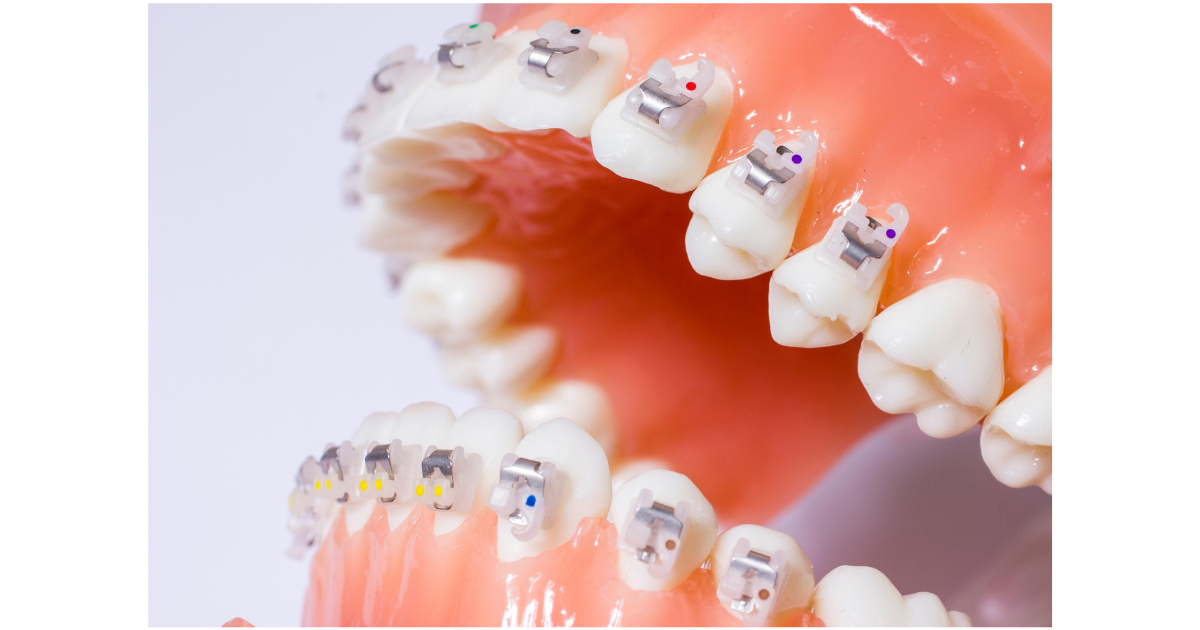
Self-ligating braces are a newer technology that relies on braces and a wire to move the teeth. They come in metal or clear/ceramic material and work similarly to metal and ceramic dental braces.
Self-ligating braces are a newer type of braces that have grown in popularity. The difference between self-ligating braces and traditional metal or ceramic dental braces is that self-ligating braces use doors or clips to hold the wire in place rather than elastic rubber ties. This makes them more comfortable, faster, and easier to keep clean.
Lingual braces
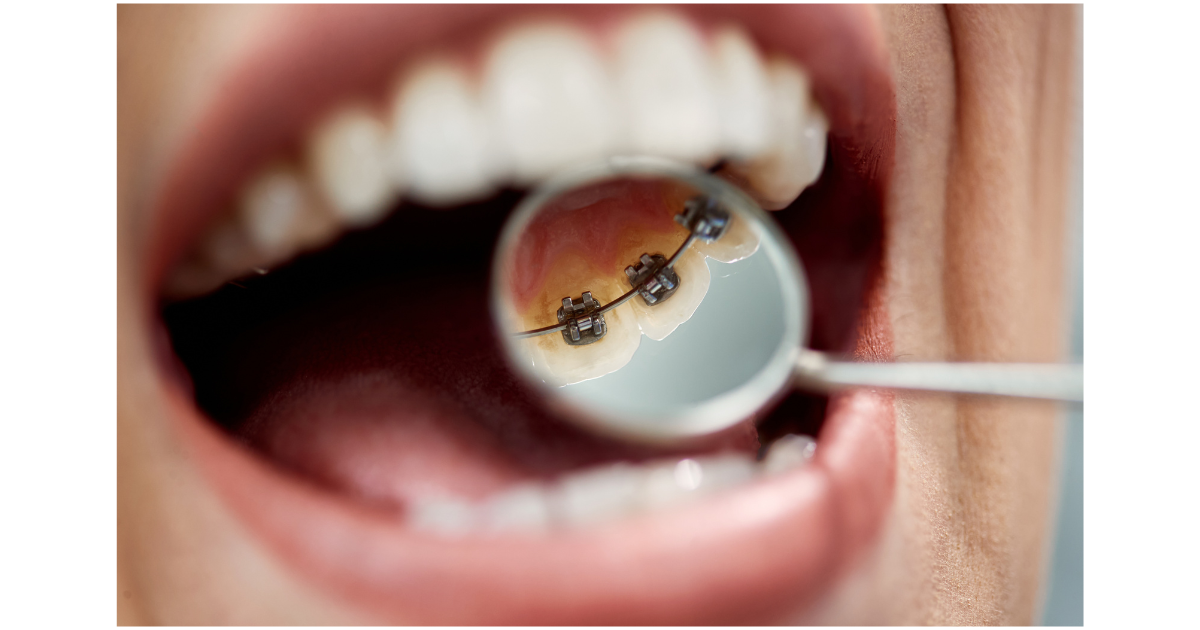
Lingual braces are braces that go behind the teeth instead of in front. This is because they require a different set of orthodontic skills that few orthodontists take the time to hone. They are the most specialized and least common orthodontic system on the market, making them more expensive and difficult to find.
This type of braces is placed behind the teeth. They are especially well-suited for adults who do not want noticeable braces but also have complex orthodontic needs. Unfortunately, this type of dental braces is not taught during orthodontic training, so it is up to the orthodontist to learn how to become proficient with them.
Clear aligner
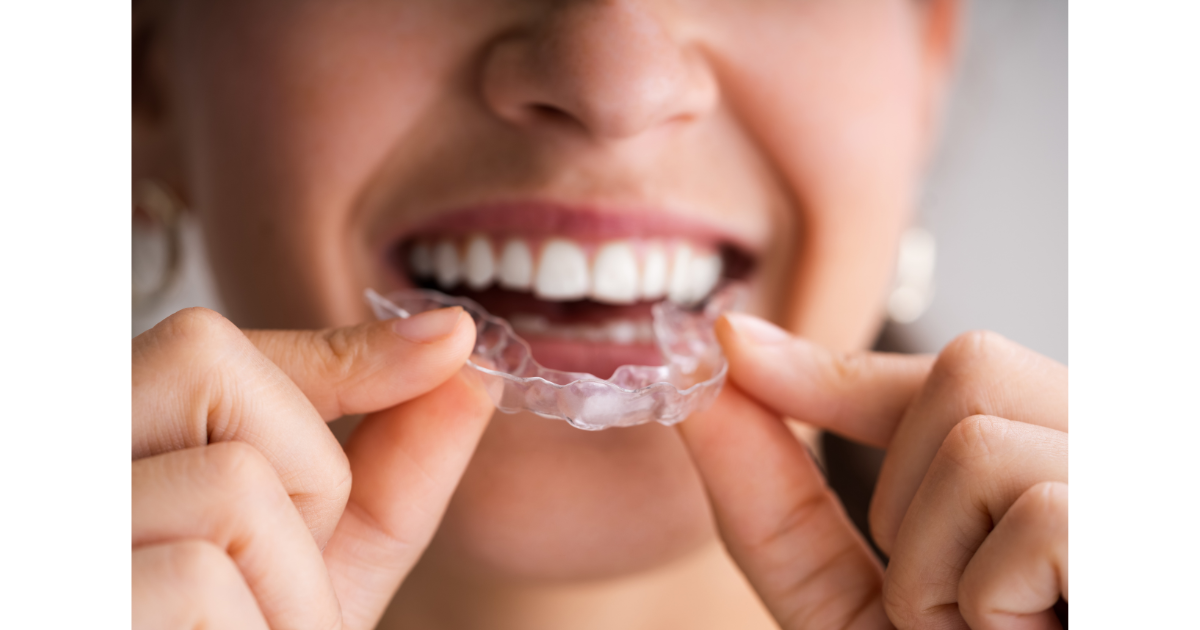
Clear aligners are braces that use gentle pressure to guide teeth into place slowly. They are nearly invisible and can be removed for eating and brushing teeth. Clear aligners are a popular choice for people who want straight teeth without the appearance of traditional braces.
They work by being switched out every two weeks to move teeth into the right position gradually. Clear aligners are nearly invisible and removable, making them a popular choice for people who want to improve their smile without having braces on all the time.
How do braces work?
Braces are devices used to align, straighten or otherwise improve the appearance of teeth. They consist of brackets bonded to the teeth and connected by wires. The wires exert a gentle force on the teeth, moving them into the desired position.
Wearing braces can take some getting used to. You may experience some discomfort when your braces are first put on or when they are adjusted. This is normal and should subside within a few days. You may also find eating difficult at first, and your speech may be affected. Again, this is normal and will improve with time as you get used to wearing braces.
Are there any risks associated with braces?
Braces are generally safe, but they have some potential risks and complications. The most common complication is irritation of the gums and cheeks, which can usually be resolved by adjusting the braces. Other potential complications include:
- Infection
- Damage to teeth or gums
- Allergic reactions
- Difficulty eating or speaking
Precautions
To avoid potential complications, it is important to follow all instructions your orthodontist gives. This includes keeping your braces clean and avoiding hard or sticky foods that can damage them. In addition, if you experience any pain or discomfort, be sure to contact your orthodontist so they can make any necessary adjustments.
How often do you need to see the orthodontist?
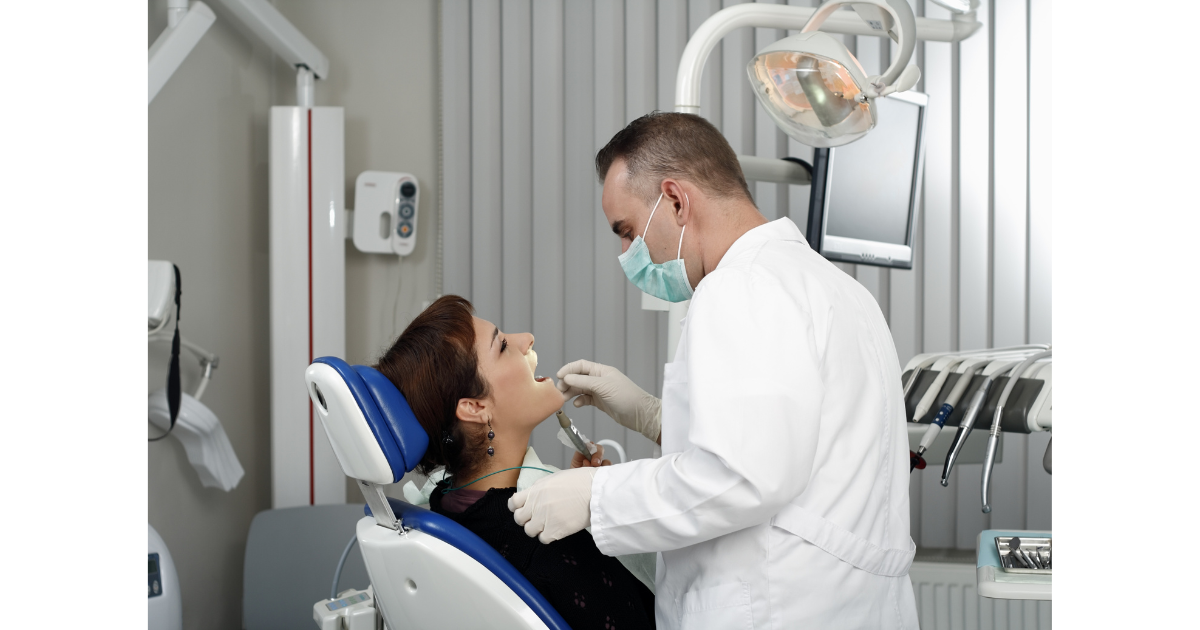
The orthodontist will want to see you every month to ensure the braces put steady pressure on your teeth and adjust the wires, springs, or rubber bands to create more tension and pressure. This will help them move your teeth into the correct position over time. Depending on your case’s severity, you may need to see the orthodontist more or less often.
On the other hand, if braces alone don’t do the trick, your orthodontist might recommend headgear. Headgear is an orthodontic appliance that includes bands, straps, or wires worn around the head. It can help to straighten teeth and shift your jaw in cases where it’s needed.
Can you remove the braces yourself?
You can remove braces yourself, but you should only do so if you have the proper tools. It is important to remember that a qualified orthodontist should remove braces. This is because they have the experience and expertise to ensure that your teeth are properly aligned and healthy after removal.
Removing braces at home can be dangerous as you may injure yourself if you are not careful. In addition, the braces are held in place by many small, sharp pieces, so it is important to be very careful when removing them.
What are the after-care instructions for braces?
It is important to keep your braces clean. You should brush your teeth after every meal and floss at least once daily. You may also need to use an interdental brush or water flosser to clean your teeth.
Foods to avoid
You should avoid hard, sticky, and chewy foods as they can damage your braces. You should also reduce sugary snacks and drinks as they can cause tooth decay.
Products to use
Several products can help you clean your braces, including special toothbrushes, floss holders, and interdental brushes. Your orthodontist may also recommend a mouthwash or fluoride gel to help keep your teeth healthy.
- Affordable Dental Implants and Dentures: Your Ultimate Cost Guide - May 1, 2025
- All You Need to Know About Dental Braces: Types, Cost, How They Work, and More - September 21, 2022
- Mouthguards: Why You Need One and How to Choose the Best - June 4, 2022

